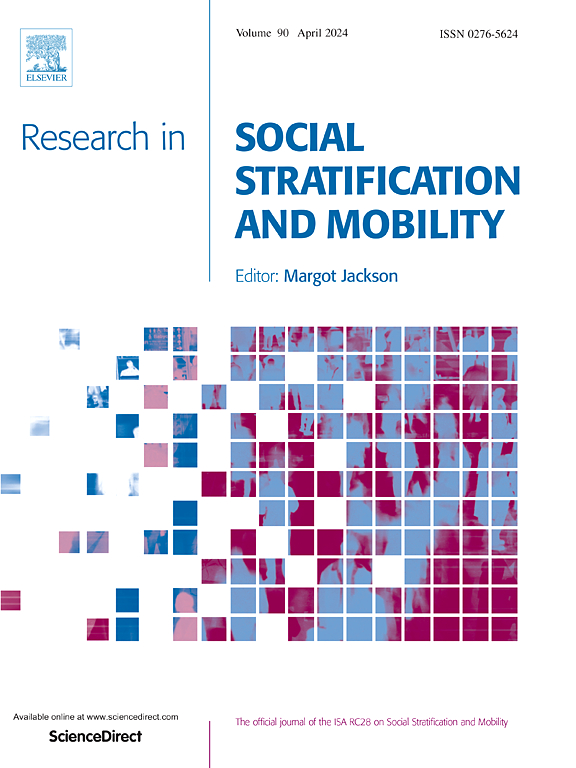Global value chains and racial inequality in the US labor market, 1979–2017
IF 2.7
1区 社会学
Q1 SOCIOLOGY
引用次数: 0
Abstract
We examine how global value chains (GVCs) impact “between” and “within-race” US labor market inequalities. GVCs change the returns to occupations and human capital categories (economic effects), as well as the share of the population within these categories (compositional effects). US racism should interact with GVCs to produce racially disparate GVC effects. We employ variance function regression to examine between and within-race inequality simultaneously, and innovate on classical decompositions to quantify how much of the change in each can be attributed to racially disparate effects of GVCs. GVCs increase inequality within and between races. These effects are largest within races, where almost no racial differences are observed. Between races, racially disparate GVC effects were often inconsistent with contemporary theories of US racial inequality. Economic effects were always most beneficial for Asian Americans, and frequently more beneficial for African Americans and Latino/a workers than for Whites. Compositional effects were nearly always most beneficial for Asian Americans, and reduced between-race inequality in aggregate. Overall, then, GVCs increased between-race inequality because large occupational and skill income gaps persisted between races, because Asian American gains are net inequality increasing, and because absolute and/or relative (to White) gains by African American and Latino/a workers in some categories were too small to offset the absolute and/or relative gains of Asian Americans and Whites in others.
1979-2017年美国劳动力市场的全球价值链和种族不平等
我们研究了全球价值链(GVCs)如何影响“种族之间”和“种族内部”的美国劳动力市场不平等。全球价值链改变了职业和人力资本类别的回报(经济效应),以及这些类别中的人口份额(构成效应)。美国种族主义应该与全球价值链相互作用,产生种族差异的全球价值链效应。我们采用方差函数回归同时检查种族之间和种族内部的不平等,并对经典分解进行创新,以量化每种变化中有多少可归因于全球价值链的种族差异影响。全球价值链加剧了种族内部和种族之间的不平等。这些影响在种族内部最大,几乎没有观察到种族差异。在种族之间,种族差异的全球价值链效应往往与美国种族不平等的当代理论不一致。经济效应总是对亚裔美国人最有利,而对非洲裔美国人和拉丁裔/白人工人往往比白人更有利。构成效应几乎总是对亚裔美国人最有利,总体上减少了种族间的不平等。总体而言,全球价值链增加了种族间的不平等,因为种族间持续存在巨大的职业和技能收入差距,因为亚裔美国人的收益正在增加净不平等,因为非洲裔美国人和拉丁裔/黑人工人在某些类别中的绝对和/或相对(相对于白人)收益太小,无法抵消亚裔美国人和白人在其他类别中的绝对和/或相对收益。
本文章由计算机程序翻译,如有差异,请以英文原文为准。
求助全文
约1分钟内获得全文
求助全文
来源期刊
CiteScore
7.80
自引率
6.00%
发文量
46
期刊介绍:
The study of social inequality is and has been one of the central preoccupations of social scientists. Research in Social Stratification and Mobility is dedicated to publishing the highest, most innovative research on issues of social inequality from a broad diversity of theoretical and methodological perspectives. The journal is also dedicated to cutting edge summaries of prior research and fruitful exchanges that will stimulate future research on issues of social inequality. The study of social inequality is and has been one of the central preoccupations of social scientists.

 求助内容:
求助内容: 应助结果提醒方式:
应助结果提醒方式:


